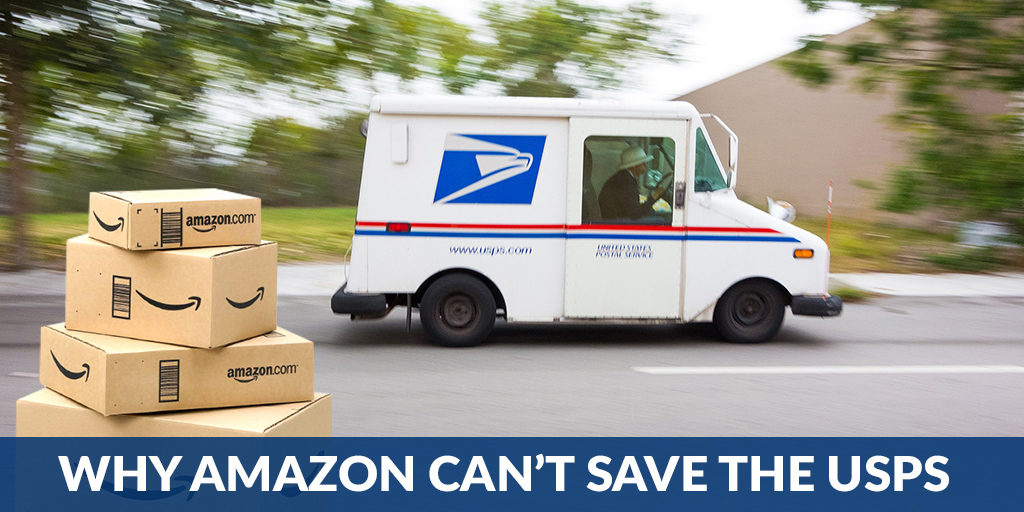Back in 2013 and 2014, the partnership between the USPS and Amazon.com made headlines as a potential saving grace for the struggling postal service. Amazon’s Prime membership rates were exploding – the primary benefit being free two-day shipping – and somebody needed to deliver these packages dependably and efficiently. The USPS was a natural ally due to its daily neighborhood canvassing, and the postal service even announced it would begin some Sunday deliveries for the first time in history – likely to please its new convenience-focused friend.
Unfortunately, the partnership was not as mutually beneficial as once hoped. But that’s not for lack of trying.
In 2015, Amazon shipped nearly 500 million packages, and approximately 40% of them were delivered by the USPS – nearly double that of both UPS and FedEx. While dominating the e-commerce behemoth’s deliveries was certainly a much-needed boon for the USPS, the sharp increase in package deliveries came hand-in-hand with additional costs due to labor, supplies and technology.
Fast forward to August 2016, when the USPS released a sobering statistic: package revenues would have to increase 260% to make up for the losses in first-class profits. Package deliveries were more prevalent than ever, but their earnings still paled in comparison to that from first-class mail. But first-class revenue is on a landslide, of course. And delivering packages is significantly more expensive.
To accommodate market changes and what Postmaster General Megan Brennan clearly sees as a package-dominated future, the USPS has invested heavily in larger vehicles, sorting equipment and additional labor. This would make Amazon’s potential withdrawal even more devastating.
Amazon has always taken a net loss on shipping, an obvious disadvantage to its free two-day delivery. But the company lost $7.2 billion dollars on shipping in 2016 – a shocking figure that’s nearly 50% higher than it was in 2015. It’s become painfully clear that despite its agreement with the USPS, Amazon needs cheaper ways to deliver its products. They’ve responded by building their own delivery infrastructure encompassing ocean, land and air. By crowdsourcing “Amazon Flex” couriers and releasing Prime Air drones (the first official drone delivery took 13 minutes “from click to delivery”), Amazon is now finding ways to avoid traditional shipping methods altogether.
So what does this mean for organizations that rely on direct mail? It’s safe to assume that if the USPS loses a cornerstone of its regular income from Amazon, it will push for rate increases on its mail products.
But unlike the package side of its business, the USPS maintains a legal monopoly on the delivery of mail to America’s mailboxes. Mailers are in essence captive customers of the USPS, including nonprofits which rely heavily on the mail channel to deliver their fundraising appeals and communications to donors. Rate increases can have devastating effects on charities’ fundraising programs: increases in postage costs means less net revenue to fulfill their missions.
The USPS should not seek price increases in its mail business to compensate for potential shortfalls in its package delivery strategy. This could prove disastrous for mailers, especially nonprofits. Thus the discipline and protection of a monopoly price cap on postage should not be removed or altered. Postmaster Brennan should not receive rate-setting autonomy.
Despite its troubling partnership with Amazon, there’s still hope the USPS can reinvent, reorganize and reinvigorate itself in other ways.
MailSmart Logistics provides worry-free shipping at remarkably-low postal rates –
You’re going to love working with MailSmart Logistics!





